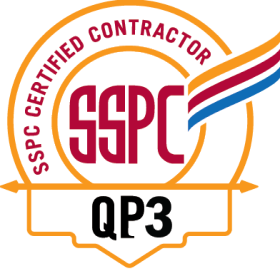Pressure vessel designing is a highly specialized process requiring expert engineering knowledge. These tanks are used to store often volatile substances under pressure. Any fault in design or fabrication could result in catastrophic failure, causing serious harm to people and the environment.
Some frequently asked questions are, “What design pressure vessel do I need?”, “What are its features?” and “How much does it cost?” Explore further to find out more.
What Is a Pressure Vessel?
Let’s start with a pressure vessel definition: A container designed to maintain a volume at a significantly different pressure to that of ambient.
These leak-tight vessels can be fired or unfired, with an internal or external pressure exceeding 15 psi. The design of pressure vessels must be done with care and accuracy because they operate under pressure. Mathematical formulae are used to calculate the hoop, radial and longitudinal stresses, to determine the required wall thickness.
They are extensively used in the petrochemical and chemical industries. Examples include columns, towers, boilers, bullet tanks, separators, knock-out drums, heat exchangers, separators, and reactors.
Pressure Vessel Design
There are many choices within the ASME standards. This brief guide will help you focus on your specific needs.
Design Loads
Pressure vessels must resist deformation and collapse when subjected to various loads. These include maximum operational weight, fluctuating temperature and pressure, wind and seismic factors, shock loads from surging, etc.
1. Pressure Vessel Shape
Pressure vessels are usually cylindrical, in a vertical or horizontal working position. They can be spherical or conical, but these are more expensive and difficult to build.
2. Vessel Size Restrictions
The smallest pressure vessels hold just 1 gallon, while the largest are hundreds of feet long and weigh thousands of tons. T BAILEY LLC can fabricate pressure vessels weighing up to 100 tons, 120 feet long, and 14 feet in diameter.
3. Head (Closure) Designs
End closures include:
- Flanged and dished: for moderate pressure.
- Semi-elliptical: for high pressure where height is limited.
- Hemispherical: for high pressure.
4. Tangent and Weld Lines
Tangent and weld lines are not usually the same. Tangent lines are measured at the end of the head closure curvature, whereas weld lines are where the closures attach to the shell.
5. Welded Joints
A longitudinal weld is used for the construction of the shell cylinder. Circumferential welds are used for seamless heads, and the attachment of necks, nozzles, flanges, and other components.
5. Bolted Flange Joints
Unlike welded joints, flanged connections enable ease of assembly and disassembly. However, they tend to leak. This is overcome by inserting a semi-metallic or metallic ring joint or lens ring gasket.
6. Nozzles
Nozzle openings can be “set-in” or “set on” the shell or head. Each nozzle has a flange connector, a neck, and reinforcement where it attaches to the vessel. Their attachment position can be radial, tangential, angular, or hillside.
7. Support
The various types of support are skirts, braced or unbraced legs, a pair of saddles, two or four-lug systems, rings, and combinations of these.
8. Jacketed
Jacketed pressure vessels have a secondary pressure enclosure on the shell or dished head for heating or cooling the contents. Options include conventional, half-pipe, and dimpled jackets.
9. Vessel Internals
Internals are used to separate liquid and vapor components. These include vane packs, sieve trays, cyclones, vortex breakers, mesh pads, and candle filters.
Materials of Construction
T BAILEY LLC fabricates pressure vessels using the highest quality carbon steel or stainless steel, from ¼” to 3” thickness.
Designing to Code
Every aspect of design, manufacture, and inspection is strictly regulated by the standards in the ASME Boiler & Pressure Vessel Code. T BAILEY LLC are specialist fabricators of ASME Section VIII Division 1 pressure vessels.
Cost of Pressure Vessel
Pressure vessel costing is determined by specifications. The most important considerations are its size, operating pressure and temperature, wall thickness, and the degree of custom fabrication required.
For example, a small pressure vessel such as a knockout drum can start from about $10,000, ranging up to $1,000,000 for the massive ones used in oil and gas refining.
Other costs include, but may not be limited to, transport, consulting services, and complex modifications.
T BAILEY LLC will cost your pressure vessel design and fabrication, or provide a budgetary forecast if you have a design ready.
Conclusion
Many important variables must be considered for pressure vessel designing. Every choice will add to the final cost and schedule. To select an economic design that provides maximum safety and performance, you need to partner with a company that has a track record of success.
T BAILEY LLC’s specialized pressure vessel fabrication division has over 25 years of experience. Our expert team offers fast and professional assistance. Do you need help with your project? Contact us for your steel fabrication solutions.






